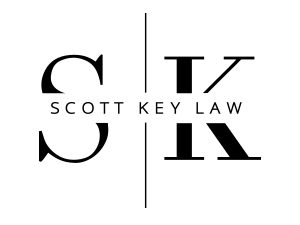Use Good Story Technique in your Next Appellate Brief
Who doesn’t like a good story? We start liking them before we know how to read. Trial lawyers generally know that juries like them. But what about appellate writing? Is there a place for story in the appellate brief or at oral argument?There is, and if you start weaving elements of story into your appellate brief writing, your client’s case will stand out from the stack of briefs the judge, justice, or law clerk is reading. While you may not be guaranteed a win, you increase the likelihood that your court will at least read your brief all the way through. A thorough an interested reading is your first and greatest hope if you are the appellant. The easiest thing for a court to do, after all, is affirm the trial court. A thorough reading gets your audience out of default mode.
Enter Kenneth D. Chestek, Associate Professor of Law at Indiana University School of Law. In a paper he presented at the Applied Legal Storytelling conference in 2007, he argues that the IRAC brief (adopted from the case method to help first year law students grasp legal opinions by breaking them down into the components of Issue, Rule, Application, and Conclusion) leads to dry and boring writing. He adds that “[t]he problem with IRAC, however, is that it doesn’t have much room for people.” Which leads to his thesis: “legal writing need not be — nay should not be — boring. When we write legal briefs to a court, we are trying to resolve some human conflict. That’s inherently interesting stuff!”
Great, you might think, it’s time to spruce up the statement of facts and make it more compelling. That’s a good start. Mr. Chestek argues that a strong narrative thread should wind through the argument section as well.
What, pray tell, is a strong narrative thread? It’s the stuff that made your favorite movie so great or that last novel that kept you up late reading. Broken down to its component parts:
a compellng story is a strong plot line, in which conflict is revealed, the protagonist struggles to resolve the conflict, and ultimately succeeds in doing so.
And that, in one deceptively simple expression, is it. Your brief, your entire brief, should have a clear conflict, a protagonist (and what’s a protagonist without an antagonist), and a resolution.
Do Stodgy Conservative Judges Want More Stories?
They don’t usually put it that way, but yes. According to Chestek’s piece, Judge Ruggero J. Aldisert, senior judge of the United States Court of Appeals for the 3rd Circuit, reports that most of his colleagues complain most that the briefs they read are “rudderless [and contain] no central theme [,]… lack … focus [, and contain] uninteresting and irrelevant fact statements.” Put another way, they don’t tell a story.
What Does a Good Story Have to Do with a Good Appellate Brief?
According to Mr. Chestek, good fiction shares several traits with a good appelate brief:
- It is plausible.
- It is readable.
- Most importantly, for present purposes, it evokes an emotional response from the reader
He adds that a good story and a good appellate brief has a definite setting. Setting could be the literal place where a crime took place, a courtroom where mistakes were made, or a small cramped interrogation room that smells of industrial cleaning chemicals, nicotine, and sweat. It might also be the law itself. Setting defines and limits conflict. What is the setting of your next appellate brief?
Good appellate briefs also have clearly-defined characters and a central conflict. Who is the protagonist in your brief? Who is the antagonist?
Finally, what is the theme of your brief? What is the plot? What will the end of the story look like after the protagonist prevails? That’s the part of the story you ask the Court to write.
Find Yourself Getting Lost?
Return to the definition of a compelling story: “a compellng story is a strong plot line, in which conflict is revealed, the protagonist struggles to resolve the conflict, and ultimately succeeds in doing so”
- What is the conflict?
- Who is the protagonist?
- Who is the antagonist?
- How should the conflict resolve itself?
If your reader can identify the answers to these questions, then your brief is likely readable, interesting, and probably one of the best briefs in the stack of briefs the judge or law clerk is reading at 4:53 p.m. on Tuesday afternoon as deadlines approach and as fatigue sets in.
For more on story, start reading more novels or when you’re watching television, try to keep the questions above in mind.
If you really want to become a story ninja, check out Robert McKee’s Story, Donald Miller’s book and blog on story, and Joseph Campbell’s works, which identify the central components of all stories running through many cultures.
Then, makes your next brief a good story

Leave a Reply
Want to join the discussion?Feel free to contribute!